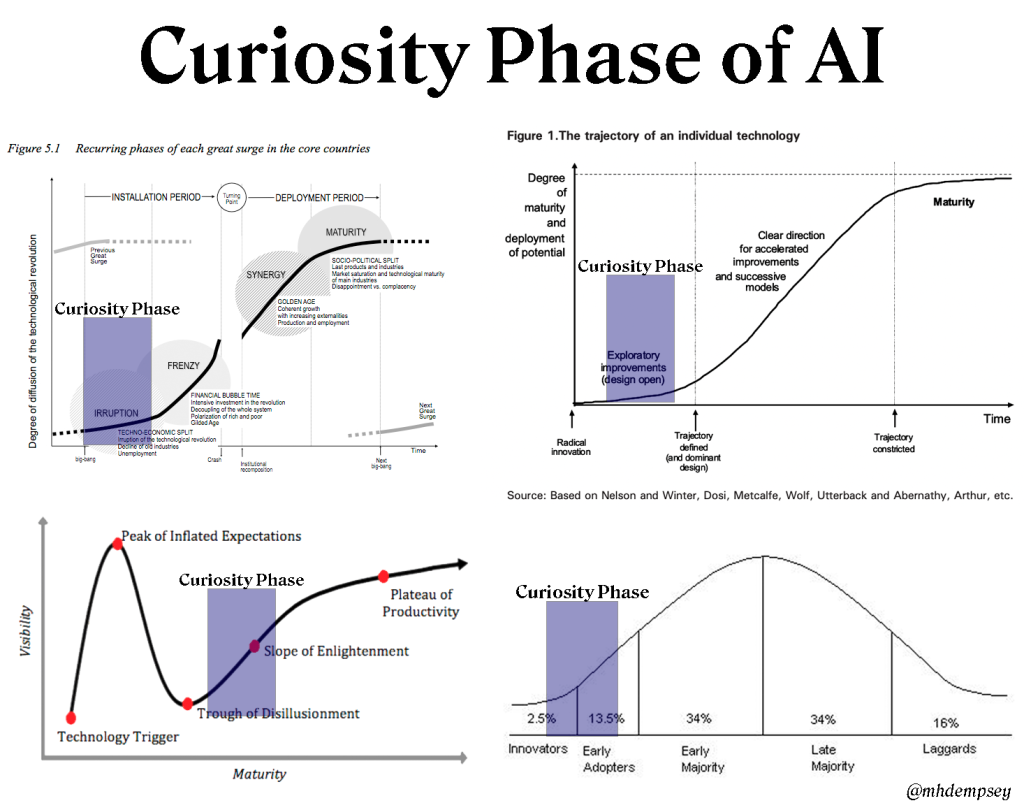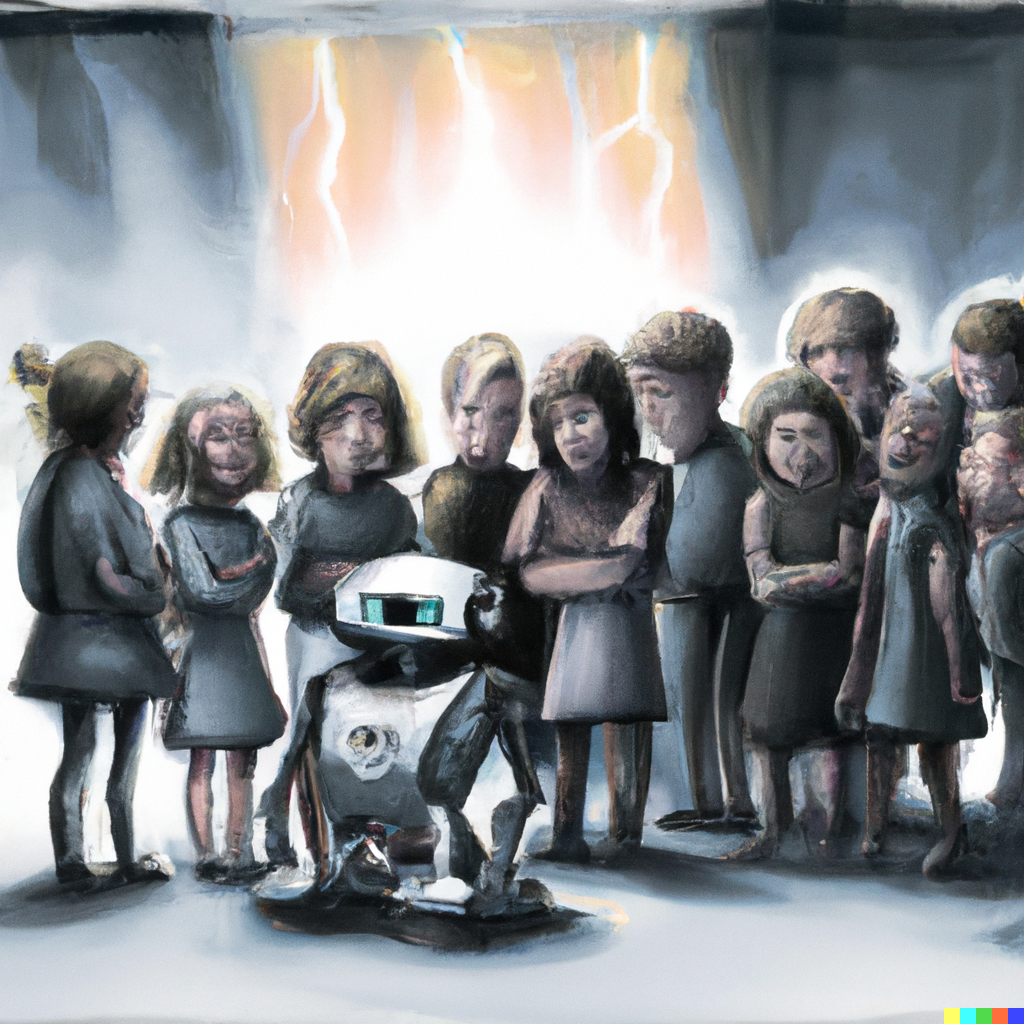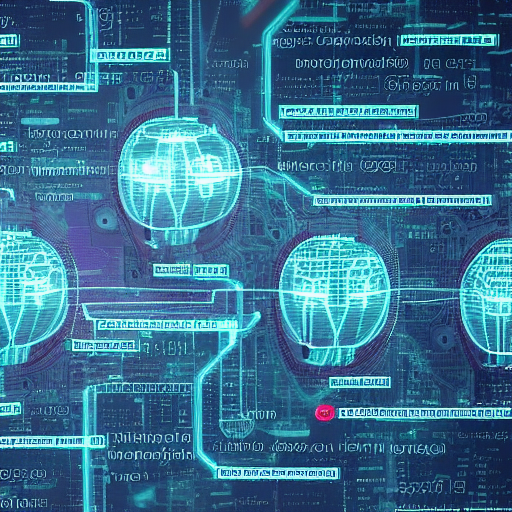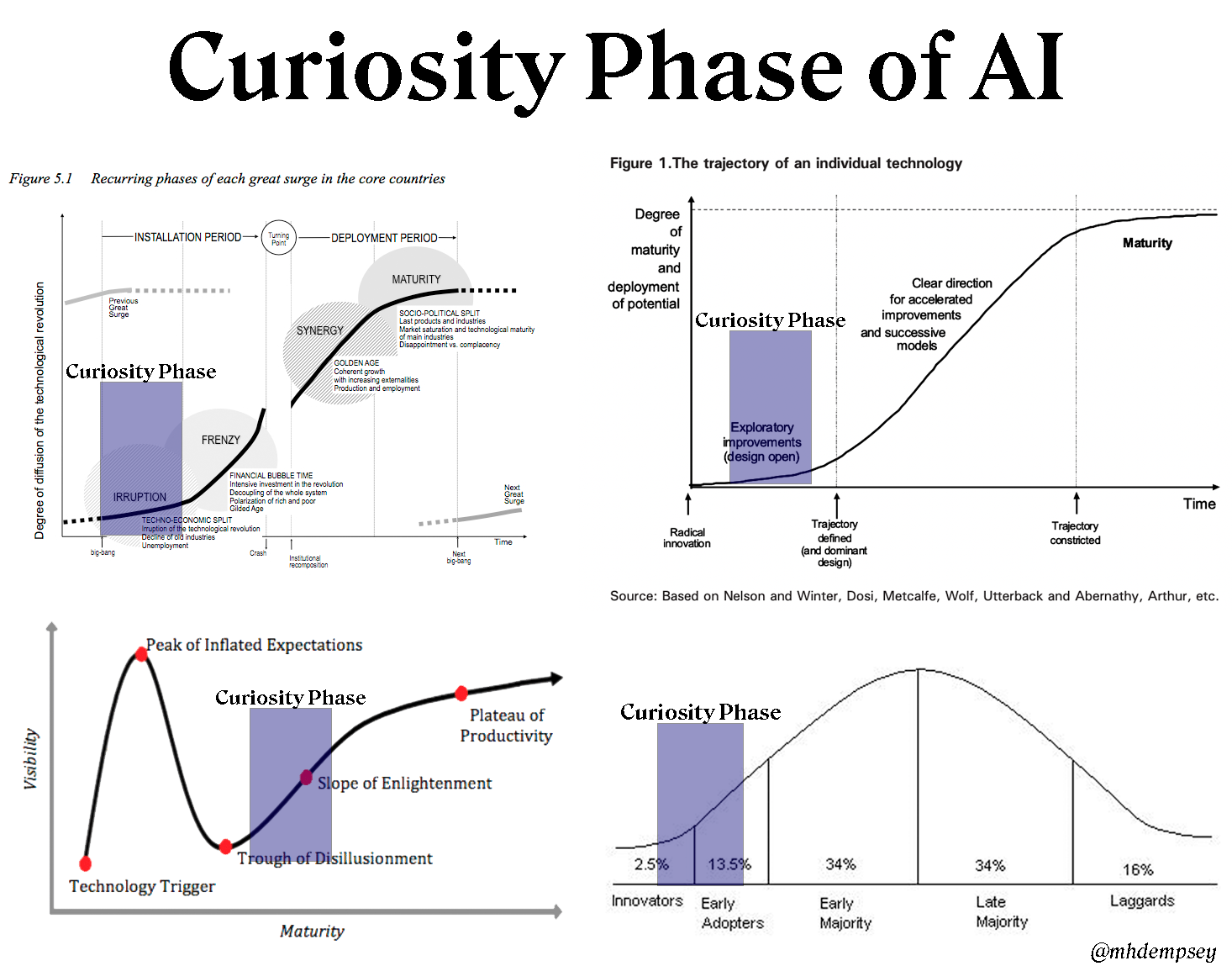If you’re on twitter these days you have likely seen a wave of videos that utilize things like Stable Diffusion for fun and novel product concepts/demos. This is happening now that designers have had the requisite time to mess around in DreamStudio or Dall-E, talk to engineers to understand what is possible, and spin up concept art.
This reminds me a lot of prior concept-heavy phases of AR and VR including the launch of Google Glass (we all remember this video), Magic Leap, Spectacles, and more. These concepts were fun the first time you watched them and lost luster over the subsequent viewings as we all litigated how much we really would use a given use-case (all while ignoring the UX of using the actual hardware).

Unfortunately, the steady flow of twitter retweets and likes led the AR/VR community to get too focused on fun use-cases versus high-value utility that people repeatedly wanted.1I’ve been outspoken about how AR/VR has always had a talent imbalance which led to overly idealistic views of the future, and underwhelming attention to GTM and execution. Of course, device dependency didn’t help in this regard.
Now that we have composability of AI models, there is a new wave of AI-first products/features making their way into the world. These effective demos will likely lead to a barrage of AI-first products that see high short-term usage followed by material churn, driven by the collective curiosity of a variety of industries.
The CURIOSITY Phase

We’re currently in what I’d call the Curiosity Phase (or less eloquently the“everyone wants to try it” phase) of AI. We can view this as a third mainstream go round for AI, after the world was introduced to Siri/Alexa and shocked by People That Do Not Exist.
The Curiosity Phase manifests itself when a technology has abstracted away some of the layers so that a wider base of users can try it, while still having a very open-ended view of what the highest value things to do with said technology is or what core product primitives should be. Some may think of this as fitting within Carlotta Perez’s core frameworks, others may look at this from a technology deployment perspective, while one could also put this moment on the traditional Hype Cycle chart. We can argue about the specifics but what’s important to understand is the speculative fervor around use-cases and value creation that comes with the Curiosity Phase.
Now that AI has started to proliferate into specific industries with real value creation, the curiosity is growing even stronger, with people looking to either dismiss this still imperfect (but pretty damn good) technology, while others wondering how they can use AI to do their job better.
For those shipping narrow products and side projects, this particular time in the market is amazing. It allows for a robust top of funnel of users who might pay a small amount to try what you’ve built, or at a minimum who will happily share it on the internet and generate 15 minutes of fame for your work.
For those building long-lasting products and turning those into companies, this is a dangerous time to operate.
Optimizing GTM & Choosing Your Customer
In the Curiosity Phase of an emerging technology, Founders must at times ignore the seemingly endless user demand and instead litigate each decision they make with a lens for building long-term defensibility and value. Product feature expansion, prioritization, go-to market, and customer success become filled with minefields amongst the rising sentiment of the industry.
This is because in the Curiosity Phase, two things happen leading to a variety of false signals:
- The technical inflection point invites in a wave of new market participants that begins to look like the narrative of TAM Expansion that founders and investors dream of, often leading to increased competition.
- The lowest value, long-tail of users often have the most free-time and highest willingness to experiment, while the most entrenched, “professional” users switch between products in their workflow less often and experiment less.
When building a company in this space it is thus very important to understand exactly which customer profile you are targeting for go-to-market motions. Within AI, the state of the art (SOTA) changes rapidly and this paired with AI’s effectiveness at doing narrow tasks could lead to singular features/concept apps outpacing more fully featured products in early growth.

This will make teams in the short-term feel as if they are suffering from “death by a thousand cuts” as a subset of users (that might be far larger than the number of paying users) complain about either efficacy or lack of a given feature in your more fully-featured product. The echo chamber of AI/ML demos on twitter only amplifies this internal anxiety.
Thus when thinking of GTM, AI-first companies should likely be targeting the highest-value incumbent users, or the “new professional” users that did not exist or were previously unable to make a living in their given role.
The Incumbent Professional users will see the existing “professional” workflows upended by AI due to:
- An efficiency increase
- A quality of work increase
- A collapse of features from disparate products into a single product2This is where prompt interfaces is most interesting.
- A previously impossible feature that is important enough to expand budget or move budget towards the AI-first product
The New Professional users will become paying customers and benefit from:
- The democratization of a skillset leading to a specific job of their industry’s stack being made obsolete from AI3Think specialized roles that rely on heavy curation or translating text into “taste”. While today some may argue the human is most capable of using AI for leverage, over time I would argue the curator gets collapsed in the stack into other high-value roles.
- AI enabling a new worker-type, leading to the worker doing a job despite having different qualifications from the prior person who did the job without AI4Will concept artists be replaced by those good at prompting models? Will those who can utilize AI-first workflows best have different backgrounds then prior AI-less “professionals”?
- A lowered barrier of entry to a part of the industry that brings consumers or prosumers to professional level or removes the middleman
If your goal is to own the Incumbent Professional, it’s important as an org to understand that while SOTA continues to be surpassed and a variety of narrow products emerge either as plug-ins or standalone apps that show short-term value, owning your high value customer allows you to create long-term advantages in your product that others with narrow scopes cannot.5Not going to go into specifics here but think data flywheels for fine-tuning and network effect related features are good examples of this.
In addition, these customers who already have structured budgets will allow you to generate revenue to scale your team and kickstart flywheels for defensibility. This will allow your team to stay ahead of the competition on integrating the bleeding edge of AI developments into your most sticky products, or into a feature that allows you to capture more of your target market.
If your goal is to own the New Professional it’s likely far more important to understand what singular features are enabling each of the above three bullets and prioritize your roadmap to ship minimum viable high-usage features that target a single bullet profile.
The danger in this approach is making sure that your cohort’s needs don’t materially change over the course of a subscription cycle. For example, a variety of New Professional users may emerge that love your product today but new paradigms in AI/ML could render that prior workflow as obsolete, leading to a rollercoaster up and down in ARR as we’ve seen with some venture-backed startups already.
This is part of the reason why the Prompt Interface is creating such a moment of disruption right now, as it has created a sense of instability in product orgs and has upended how they think about the next 1-2 years of UI/UX.
Pace and Conviction Dictate Success
Regardless of your GTM approach and the type of users teams end up choosing, my core view on building AI-first companies in 2022 is that outside of the core team dynamics above, pace and conviction will be what dictates success.
The pace of innovation means having the time to see validating data will be nearly impossible, and thus teams must build ahead of feedback loops from scaled user data. Because of this, feedback loops must have tighter timelines, experiments must be cut off faster, and likely teams must build in a more speculative manner, in an effort to skate to where the proverbial puck is going, before others do so.
This means having a high conviction around the pace of development around models most relevant to your company, as well as an obsession with primary research of early customer interactions with your product is as important as ever. For those that are unable to do this consistently, we will see products that chase a variety of user types all over demo-land, in the hopes of convincing them to one day put down a credit card, only to see them churn out a few months later.
Those with a clear understanding of their industry’s highest value users and a point of view on the part of their market that will commercialize at scale first will have a shot at turning over hundreds of billions of dollars (or more) of market cap.
Observing the AI/ML community for years now has shown me that the industry typically experiences Cambrian Explosion moments like this via inflection points that are very hard to perfectly time. Even those paying close attention to the steady progress made in academia and research labs have mistimed this most recent wave. While many of these company building dynamics are not exclusive to AI-first products in 2022, the rate of change at each part of the stack means that uncertainty in how to build a company in the space has never been higher.
The difference this time around is that we are ready to bring many of these use-cases into production, however the level of sophistication and diversity of talent needed to do so continues to be incredibly high. And perhaps with that, it makes sense that the reward for pulling it off has never been greater.


Recent Comments